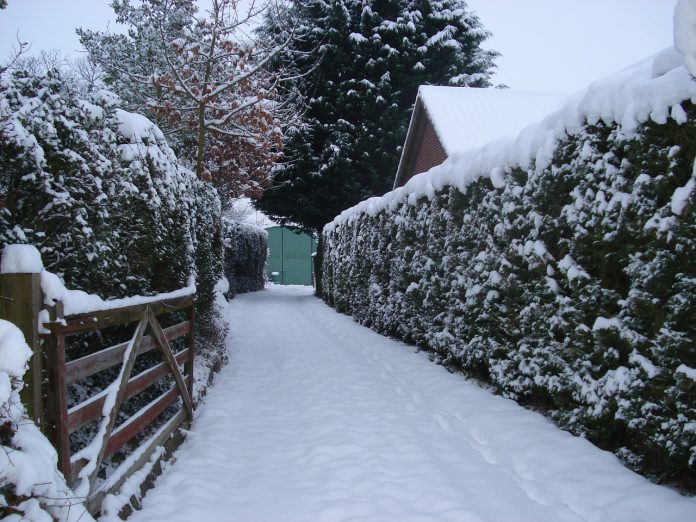Did you know that more than 99% of streams and rivers are impacted by anthropogenic (human) activity?
I found myself standing outside the other night looking up at the stars and thinking about how chilly the nights have been. With the frigid weather already here, we can expect that snowfall will not be far behind. With this snowfall comes a source of pollution we might not think about.
Salt pollution
Whether you live on a farm or in a small town, road salts are bound to make an appearance sooner than later. Salt pollution is present all across North America but predominantly is an issue in the eastern and midwestern United States.
Major causes of increasing salinity of freshwater include human salt inputs, agriculture, mining resource extraction and land clearing. Examples of this include road deicers, overuse of minerals used in agriculture (lime) and non-compliance of sewage systems.
Although this type of pollution isn’t often thought about, salts can be detrimental because of their ability to change the chemical composition of major ions in waterways. Overuse of salts will gradually cause a decline in stream and lake biodiversity, increase corrosion of pipes, increased contamination, and pond, river, stream and ocean acidification.
Think about fish
Take a minute to think about fish. Freshwater fish are osmoregulators; this means that the concentration of salt is higher in their blood than in the water that surrounds them. Osmoregulation is the process of maintaining an internal balance of salt and water in the fish’s body.
Without this process, homeostasis would be disrupted and throw off body functions such as temperature and fluid balance. Homeostasis is being in a steady state of internal, physical and chemical conditions. Over time, an increase in salt pollution can really throw off this balance.
Farmers
Freshwater organisms and stream habitats are not the only ones affected by salinization. Farmers can be negatively affected by this year-round. Winter brings freezing pipes, nipping cold on baby calves, and the brutal early morning feedings in the winter, but it can also be followed up by a decrease in crop and pasture growth in the upcoming spring.
Salinity from road salts can affect production of crops and pastures by interfering with nitrogen uptake, reducing growth and stopping plant production. For example, ions like chloride (found in salt) are toxic to plants and can cause death when an increase in these ions occur.
Overuse of certain minerals year-round can also be harmful to farmland and increase salinity inputs. The spreading of lime in the fall is a great example of something that can be beneficial but also harmful to your farm. Lime can increase pasture and crop health, but it can also create a nasty run-off cocktail that is detrimental to land and waterways within your farm or watershed.
An easy fix to this is to get a soil test every few years. This will tell you the exact amount of lime you need to spread on fields.
Create healthier watersheds
As landowners, we may not be able to control the amount of salts used for roadways but we can control our own use of salts on our property. Use the following tips to create healthier watersheds and farmland for future generations.
1. A little goes along way. One handful of rock salt is enough per square yard. If using calcium chloride you can use even less. Also apply deicer before the snow and ice to reduce runoff and increase the effectiveness of the deicer.
2. Choose deicers wisely. Rock salt (Sodium chloride) is the most common deicer. This contains cyanide, which is harmful to freshwater organisms and plants. It also only works above 15 degrees Fahrenheit. Calcium chloride is a better choice, containing less harsh chemicals. Although more expensive, you only need to use about one-third the amount, compared to rock salt. Magnesium chloride is the best deicer and is the least toxic to plants and animals. You can even use sand to create traction instead of a deicer.
3. Do the least amount of work. Only spread salt on surfaces of driveways and walkways that you will be using the most. Never spread on the lawn or near streams, ponds, trees or storm drains. Salt works best when applied right before a snow fall or after snow is removed from surfaces. Salt directly after shoveling your driveway to increase efficiency of your work.
By following these tips and being more mindful of your salt inputs, we can ensure healthier watersheds and farms year round.













